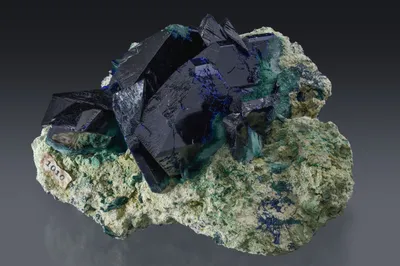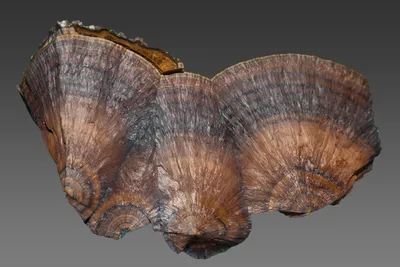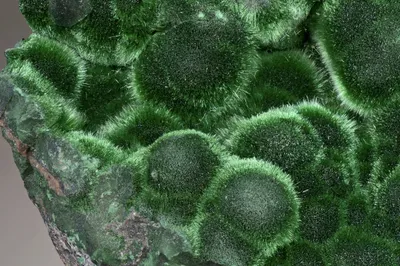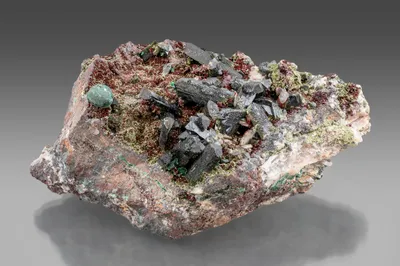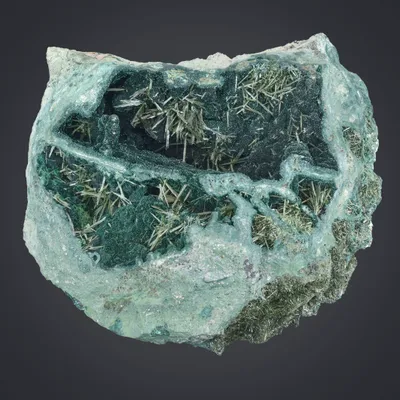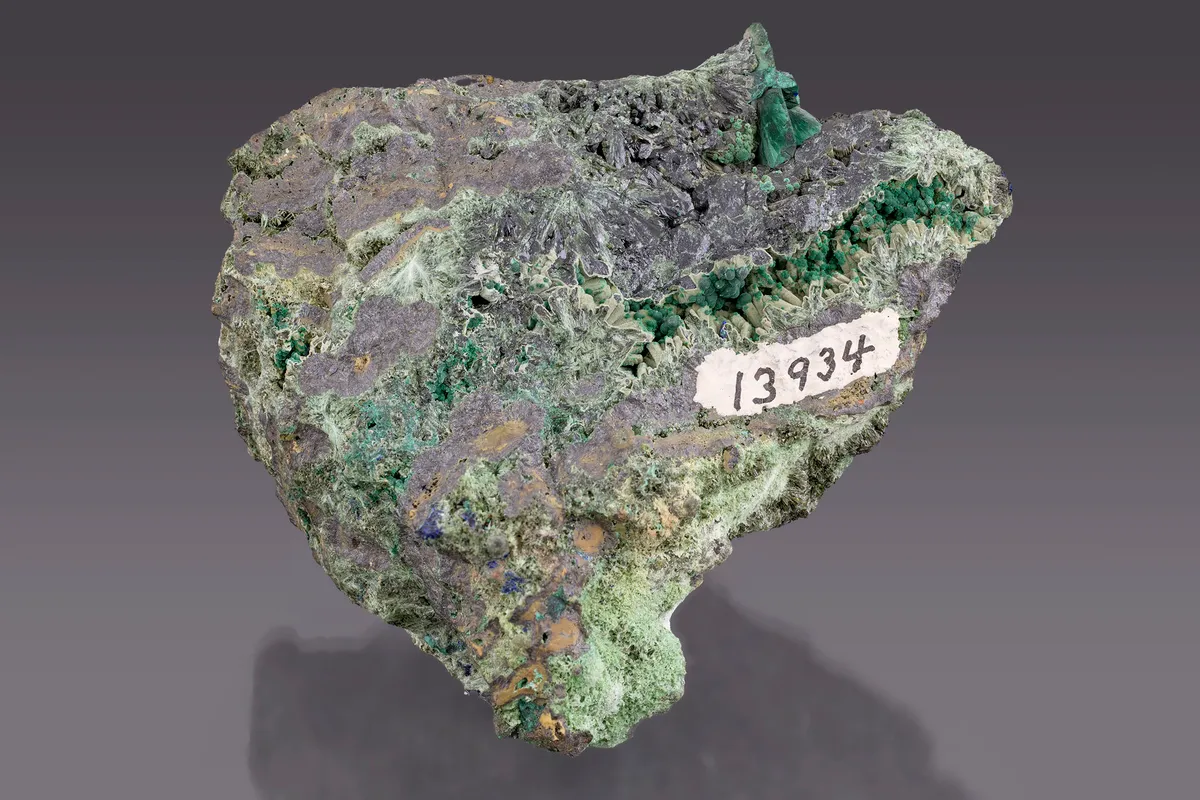
Image Credit: Malcolm Southwood

Image Credit: Malcolm Southwood
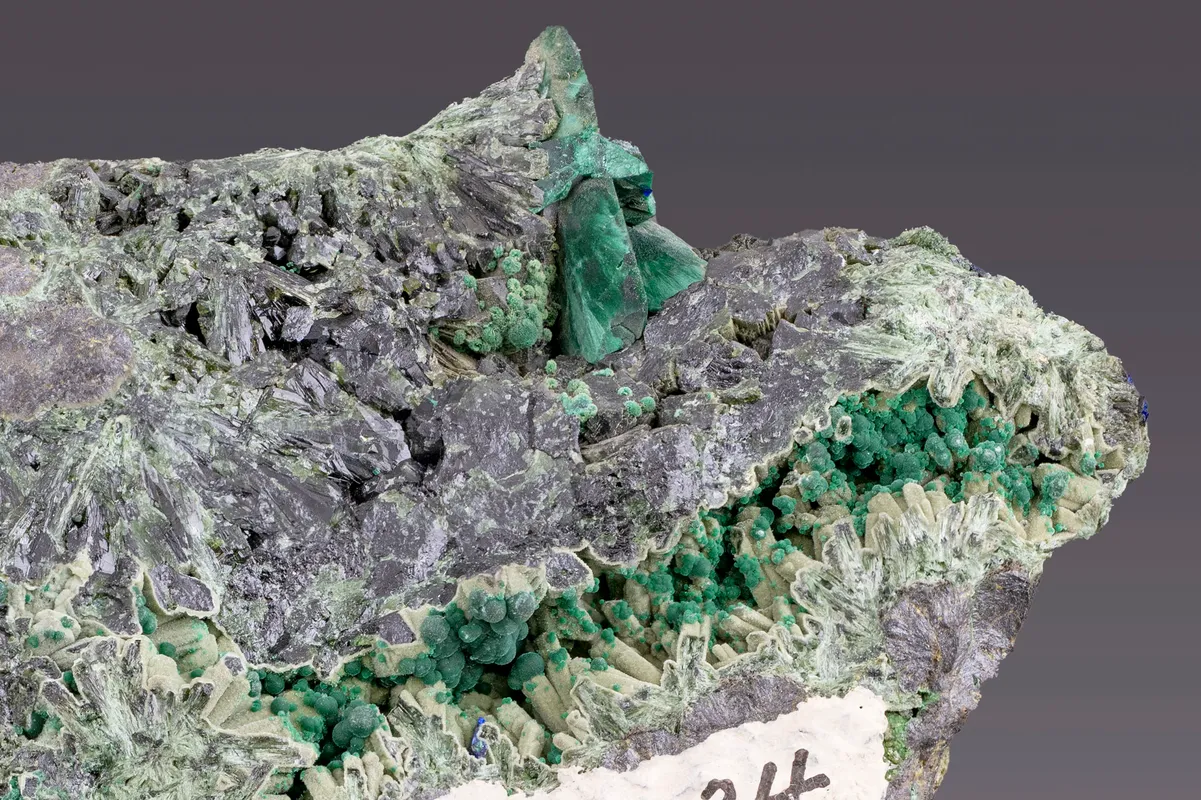
Image Credit: Malcolm Southwood
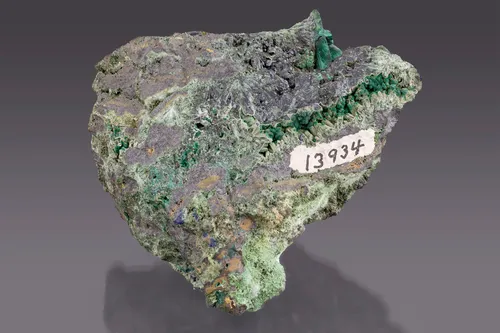
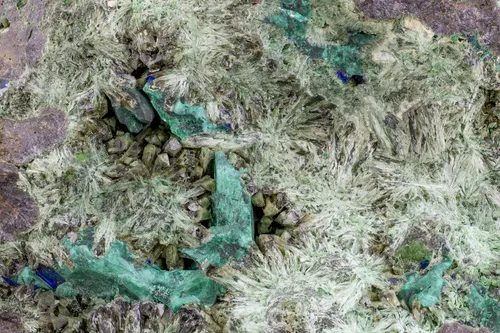
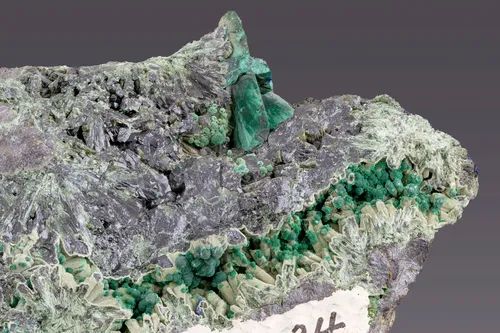
Specimen Title
Olivenite (w. azurite and malachite)
Associated Minerals
azurite; goethite; malachite
Principal Mineral
Size
Cabinet; 75mm
Location in the Mine
First oxidation zone
Provenance
Palache, C.
Collection
MGMH; 146260
Entry Number
Specimen; TSNB779
Associated Minerals
azurite; goethite; malachite
Description
Much of the matrix of this specimen is massive olivenite (with minor goethite), but voids have facilitated the development of free-standing crystals of olivenite (of several habits) and azurite (most of which has been altered to malachite (exhibits 2 and 3).
Olivenite occurs as (a) equant, blackish-green crystals (to 5 mm), (b) tight radial aggregates of elongated blade-like crystals, (c) acicular, very pale green (almost white) crystals (Exhibit 2) and (d) elongated prismatic crystals (to 5 mm; exhibits 2 and 3). Some of the prismatic crystals are partly hollow and encrusted (externally) with a mat of minute fibres of a later generation of olivenite (EDS verified; Frank Keutsch, Harvard University, 2025).
Both fresh azurite crystals (to 3 mm) and pseudomorphs of malachite after azurite (to 8 mm; exhibits 2 and 3) are present and post-date the olivenite. Finally, spherules of non-pseudomorphous malachite (to 1 mm) encrust the partly dissolved and re-encrusted olivenite crystals (Exhibit 3).
This specimen was collected by Charles Palache of Harvard University, in early April, 1922 during an underground visit at Tsumeb at the time of the Shaler Memorial Expedition to South Africa. It carries a Shaler Expedition field number – 13934 – (Exhibit 1) in addition to its MGMH catalogue number.
